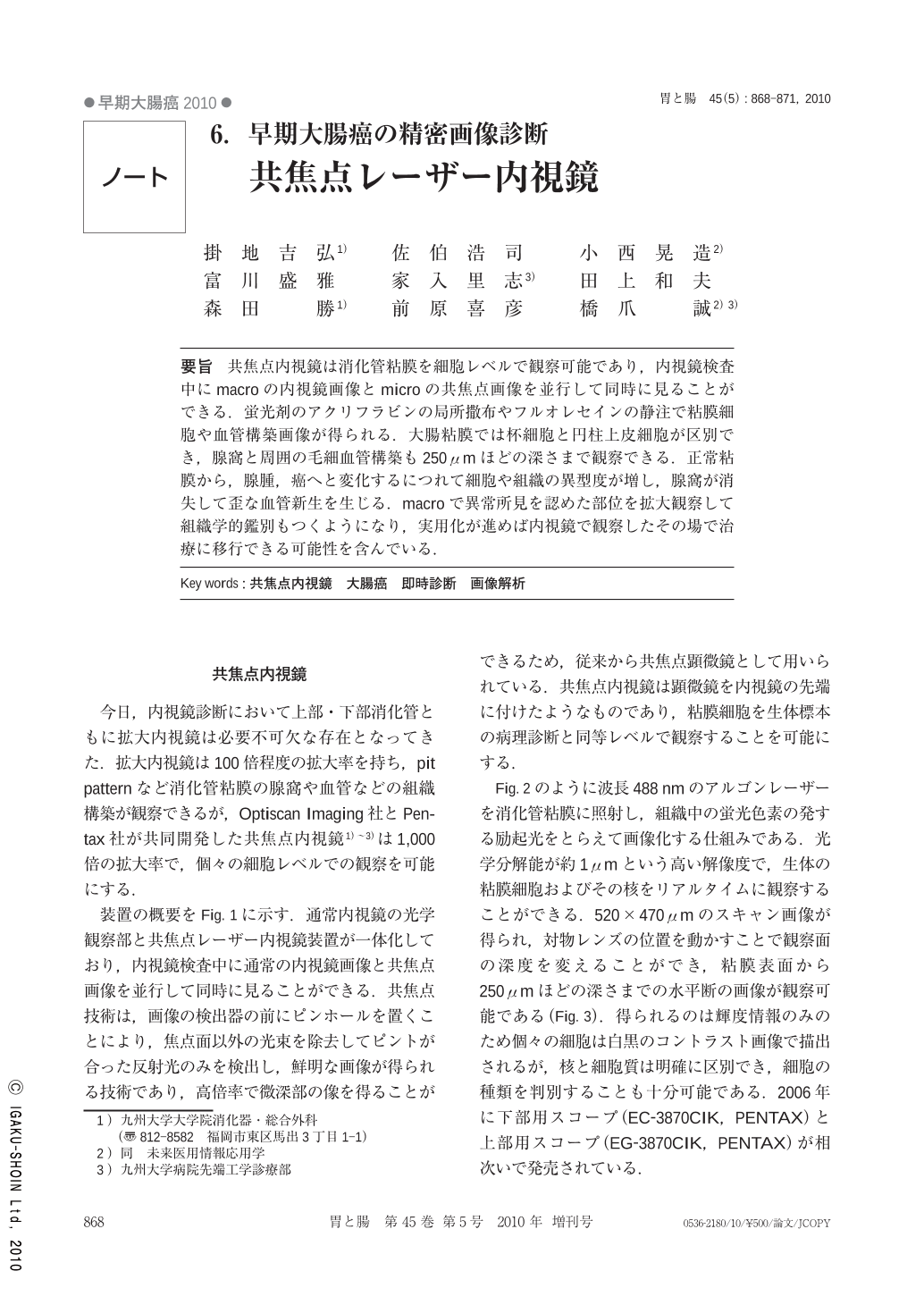Japanese
English
- 有料閲覧
- Abstract 文献概要
- 1ページ目 Look Inside
- 参考文献 Reference
要旨 共焦点内視鏡は消化管粘膜を細胞レベルで観察可能であり,内視鏡検査中にmacroの内視鏡画像とmicroの共焦点画像を並行して同時に見ることができる.蛍光剤のアクリフラビンの局所撒布やフルオレセインの静注で粘膜細胞や血管構築画像が得られる.大腸粘膜では杯細胞と円柱上皮細胞が区別でき,腺窩と周囲の毛細血管構築も250μmほどの深さまで観察できる.正常粘膜から,腺腫,癌へと変化するにつれて細胞や組織の異型度が増し,腺窩が消失して歪な血管新生を生じる.macroで異常所見を認めた部位を拡大観察して組織学的鑑別もつくようになり,実用化が進めば内視鏡で観察したその場で治療に移行できる可能性を含んでいる.
The Confocal Endomicroscopy System is a newly developed imaging tool that uses laser light and optical technology to visualize living tissue at the cellular level. Confocal images were generated simultaneously with endoscopic images. Fluorescent contrast dyes are essential to achieve high-contrast images. Topical acriflavine stains the nuclei of mucosal cells, and intravenous fluorescein sodium diffuses across capillaries and stains the extracellular matrix of the surface epithelium and the lamina propria. In regions of normal colon, it has been possible to distinguish the dark round goblet cells from the smaller, brightly stained columnar epithelial cells. Crypts and lamina propria can be recognized up to 250μm below the surface. In the change from normal epithelium to adenoma or carcinoma, cytologic or histologic atypia has been developed, crypts destroyed, and bizarre tortuous neovascularization has developed. The confocal endomicroscopy system provides instant images of suspicious lesions, which correspond well with pathological images. The diagnostic possibilities may be of crucial importance in clinical practice and can be used to make an immediate judgment of the necessity for treatment.

Copyright © 2010, Igaku-Shoin Ltd. All rights reserved.


